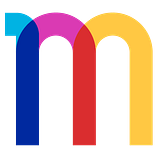The Meaning of Pride: Have We Lost It?
Activists question whether Pride, once a radical event, has lost its meaning amid cultural assimilation and corporate sponsorship.
 Most people, at least those who are social justice-minded, have heard of the Stonewall Inn Riots of 1969 that radicalized the American Gay Rights Movement. We are less familiar with the events that came after Stonewall that led to the Christopher Street Liberation Day demonstration on June 28th of 1970, the first annual Pride march.
Most people, at least those who are social justice-minded, have heard of the Stonewall Inn Riots of 1969 that radicalized the American Gay Rights Movement. We are less familiar with the events that came after Stonewall that led to the Christopher Street Liberation Day demonstration on June 28th of 1970, the first annual Pride march.
Following the riots, the gay community had made their intentions clear — no longer would they passively accept discrimination and move along. The question was now whether they could capitalize on the spirit and energy of Stonewall to create a broad and lasting movement for social change. Younger activists formed the radical leftist organization the Gay Liberation Front (GLF), modeled after the Black Panther Party. Unlike the early homophile organizations such as Mattachine, the GLF sought to take a more direct confrontational approach to gay politics. On November 2nd of 1969, GLF members Ellen Broidy, Linda Rhodes, Craig Rodwell, and Fred Sargeant wrote a resolution to create an annual parade in commemoration of the Stonewall Riots, which they presented at the Eastern Regional Conference of Homophile Organizations (ERCHO). The resolution received unanimous support, albeit from the Mattachine Society, who thought the community should not draw unnecessary attention to itself through a highly visible event such as a parade.
Broidy, Rhodes, Rodwell, and Sargeant returned to New York City and began preparations for the parade, originally referred to as the Christopher Street Liberation Day Parade. Rodwell, owner of the Oscar Wilde Memorial Bookstore, used his business as a central hub of information for the demonstration and to solicit donations. He also called prominent gay leaders in Chicago, Los Angeles, and San Francisco to organize sister marches.
The organizers were unsure how many would participate in the planned 51-block march. They assembled west of Sixth Avenue at Waverly Place with their hand-lettered signs and began marching down Christopher Street, calling out to others to join the demonstration as they moved up Sixth Avenue into Midtown Manhattan. At one point, Fred Sargeant, who remained at the head of the march the entire time, climbed a light pole and looked back. What he saw astonished him: “We stretched out as far as I could see, thousands of us,” he later remarked. “There were no floats, no music, no boys in briefs. The cops turned their backs on us to convey their disdain, but the masses of people kept carrying signs and banners, chanting and waving to surprised onlookers.”
Once a radical demonstration that brought the community together to address pertinent issues and increase gay visibility, Pride celebrations have become prime opportunities for companies to profit from the LGBTQ community through the sale of alcohol, food, and other themed merchandise. Pride has become a celebration of the LGBTQ community through capitalism, as opposed to a movement for real social change. “We were heavily into smashing the patriarchal, warmongering, racist state,” Ellen Broidy remarked, reflecting on the history of Pride. “Now we’ve kind of embraced the state.”
This year (2017), the New York City Pride March will be televised live for the first time in history. Finally, the revolution will be televised, but is it even a revolution anymore? Pride has officially become a form of entertainment, akin to the Macy’s Thanksgiving Day Parade. Televising Pride has both pros and cons. While the parade will inevitably reach those, particularly LGBTQ youth, who may not be able to attend a local celebration, television networks and corporate advertisers will be profiting from their viewership. And in some ways, profit will be made from people’s pain, shame, and desire to belong. Thus, one of the world’s largest human rights demonstrations has become one of the world’s largest displays of capitalism. Marches are no longer organized by radical activists with specific goals, but by prominent gay leaders and organizations in concert with corporate sponsors.
Pride remains an important event, mainly for the sense of personal liberation and freedom it gives to members of the community, but its social justice roots have been largely obscured.
Has the meaning of Pride been lost amid cultural assimilation and corporate sponsorship?
Having pride is, no doubt, a political act. But, our sense of pride, authenticity, and personal power must be directed toward specific goals — goals that do not exclude the most marginalized and vulnerable members of the community.
We can take direction from #NoJusticeNoPride, a Washington, D.C.-based activist coalition that targeted the Capital Pride march, attempting to make the event more inclusive, and to return Pride to its radical and activist roots. #NoJusticeNoPride demanded changes to Capital Pride such as the involvement of queer and/or transgender people of color (QTPOC) at all levels of planning, increased recognition of the contributions of QTPOC to the history of Pride, a decreased police presence at Pride events in acknowledgement of the problematic relationship between the criminal justice system and (queer) communities of color, for Capital Pride to foreground the needs of ALL members of the LGBTQ community over corporate sponsorship of the event, and to divest from corporations who harm the community. The group’s full list of demands can be read below.
On Saturday, June 10th, 2017, #NoJusticeNoPride attempted to shut down the Capital Pride march at three separate points along the route as a way to make their voices heard and as an attempt to open dialogue with Capital Pride organizers. Prior to the march, the group had tried to open lines of communication with Capital Pride, but meaningful dialogue did not ensue. And following the march, it appears that dialogue between the groups remains tentative at best. Unsurprisingly, #NoJusticeNoPride protestors were criticized on social media for being divisive and harming the movement through creating in-fighting.
Following #NoJusticeNoPride, here are three broad suggestions for returning Pride to its roots and addressing some of the current issues faced by Pride celebrations:
- Incorporate and teach a non-whitewashed and non-cis-washed version of LGBTQ history as part of annual Pride events.
- Incorporate and take serious the concerns of QTPOC including, but not limited to, divesting from corporate sponsorship that is harmful to the community, particularly those who are POC and/or low income, and limiting the presence of persons who represent the criminal justice system at Pride events.
- Have a national activist focus each year that will be addressed by Pride events in respective cities in ways that are most meaningful to that particular community or locale. For example, this year, Pride events could have taken on the Department of Education, namely Secretary of Education Betsy DeVos’ shameful retraction of Obama-era Title IX guidance for transgender students. Another option would be to demand Congress pass the Equality Act, an important piece of legislation, which would amend the Civil Rights Act of 1964 to confer full federal equality on the basis of sexual orientation and gender identity.
Catalyzed by the hate campaign of Christian anti-gay crusader Anita Bryant and the assassination of openly gay San Francisco politician Harvey Milk in 1978, the first National March on Washington for Lesbian and Gay Rights took place on October 11th of 1979. The organizers of the march issued the following five demands:
- Pass a comprehensive lesbian/gay rights bill in Congress.
- Issue a presidential executive order banning discrimination based on sexual orientation in the federal government, the military, and federally contracted private employment.
- Repeal all anti-lesbian/gay laws.
- End discrimination in lesbian-mother and gay-father custody cases.
- Protect lesbian and gay youth from any laws which are used to discriminate, oppress, and/or harass them in their homes, schools, jobs, and social environments.
These demands, drafted forty years ago, have not been fully met. But the work of pioneering gay and transgender activists has allowed us to be here and queer — to be proud. Now, what are we going to do with our hard-won sense of pride?
Nearly five decades have passed since the revolution that began on a hot New York City night in June of 1969, when queers took to the streets and fought for their humanity and right to exist. And it may be time to take to the streets, once again, to follow the blueprint those trailblazing revolutionaries created, to finish what they started.
